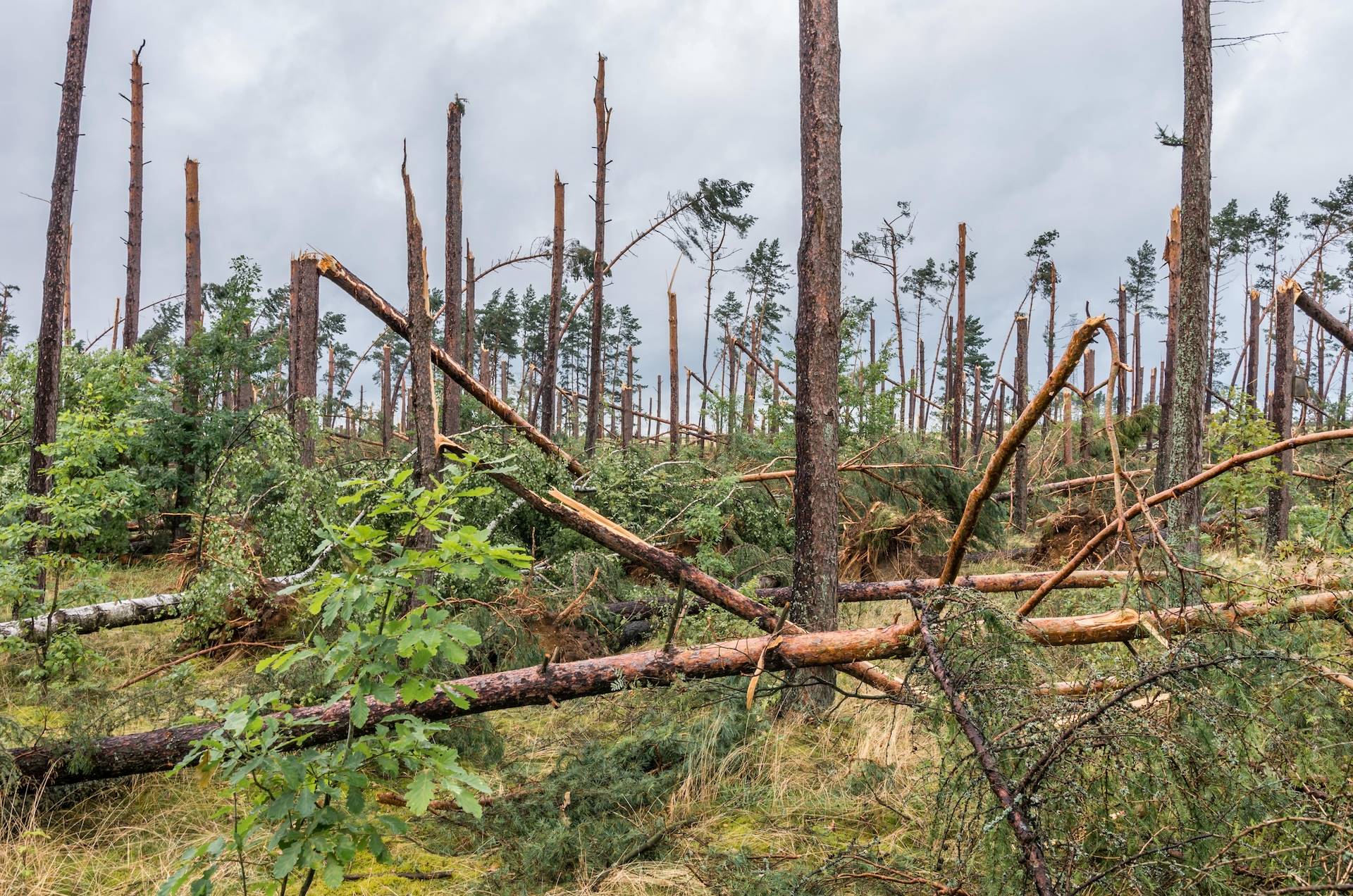Just one hurricane could leave devastating impacts on forests in a single region of the United States and their ability to lower air pollutants, a study has found.
Across the country, forests have been found to help mitigate air pollution by storing and sequestering carbon in tree tissue. However, that carbon can be dangerously emitted back into the atmosphere and environment during a severe storm.
What's happening?
A study published in Global Change Biology, and shared by Wiley, has found that a single hurricane hitting New England could severely damage trees in the region, wiping out around 5-10% of forest carbon — much more than the amount removed from the air by these forests every year. The authors claimed a single hurricane could release 10 or more years' worth of sequestered carbon.
Extreme weather events like hurricanes have always occurred across the country. However, impacts of human-induced climate change can drastically enhance these weather events, making them more severe or frequent. Research has found that as the planet is overheating, more hurricanes are expected to hit the Northeast. Warmer air absorbs more water than colder air, meaning more rain capacity, and warmer ocean temperatures have been shown to "supercharge" hurricanes, as MIT Technology Review has said.
In New England, the researchers found that hurricane wind speeds have doubled, causing increased widespread tree damage while affecting areas traditionally less hit by the storms.
Why are these findings important?
New England is one of the most forested regions in the country. While the area is not frequently hit by hurricanes, the severe storms have downed hundreds of millions of feet of trees in the past, according to Dartmouth.
These forests are massive carbon stores that can help protect our environment and act as a natural way to mitigate air pollution. However, the findings suggest that extreme weather events like hurricanes pose a massive risk to their existence and durability to mitigate pollution over a long period of time by releasing the sequestered carbon.
What can be done?
Carbon mitigation that naturally occurs within forests is becoming an increasingly popular way to curb air pollution and, as a result, extreme weather events, the study authors have said. But there is a risk to this increased reliance.
"We have to adequately account for the risks to this forest carbon from disturbances," author Shersingh Joseph Tumber-Dávila said, adding that current carbon market policies are "incredibly insufficiently buffered" to combat risks like hurricanes.
"If forest carbon stocks are going to continue to be used as a nature-based climate solution, we have to be critical about evaluating its longevity and risks, to make sure that we're doing something that actually has an impact," he told Dartmouth.
Individuals can also work toward lowering their own levels of air pollution by reducing food waste, driving less, opting for clean energy products like solar panels, or decreasing personal meat consumption.
Join our free newsletter for cool news and cool tips that make it easy to help yourself while helping the planet.









